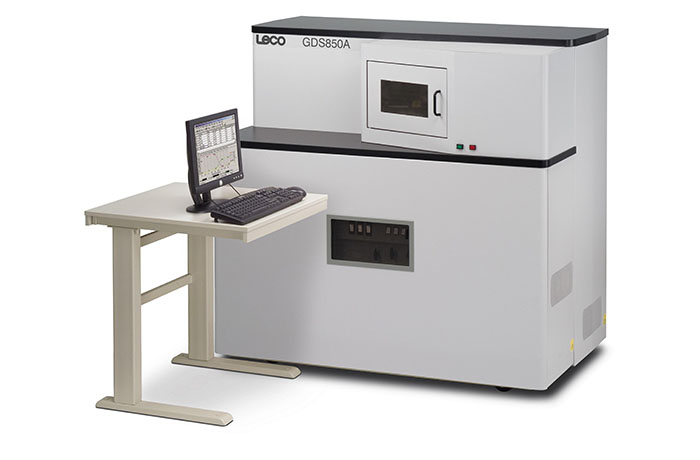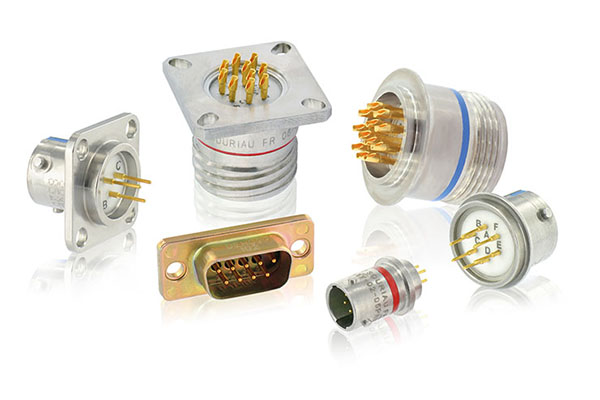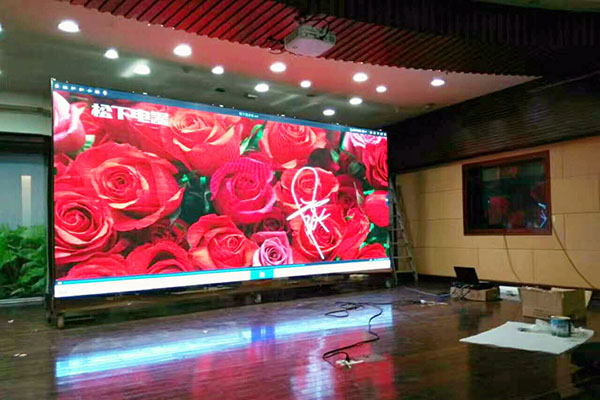Glow discharge spectroscopy directly analyzes solid samples. Glow depth profile analysis technology has been used a lot in the field of surface analysis of materials over the years, and more and more people are interested in it.
The Glow discharge spectrometer has advantages that can’t be found anywhere else when it comes to looking deeply into the surface and depth of materials. Glow discharge spectrometers were first used in the steel industry and are mostly used to figure out if steel sheets are galvanized or if they have passive films on their surfaces. Glow discharge spectroscopy technology has been improving over time, and as it has, so has the performance of the instrument and the range of materials that can be analyzed.
How do glow discharges work?
Glow discharge is a type of gas discharge that makes a low-pressure gas glow. It is also called a self-sustained discharge (self-excited conduction) in a rarefied gas. Faraday found out about it. It has two stages of change: “subnormal glow” and “abnormal glow.” Most of the time, glow discharge is used to make neon regulator tubes, helium-neon lasers, and other devices.
Glow discharge, or an abnormal glow discharge, can be made with a direct current or pulsed direct current target power supply through a gas discharge, or with an alternating current (rectangular wave bipolar pulse power supply, sine wave intermediate frequency, and radio frequency) target power supply through a gas discharge in a vacuum chamber.
During gas discharge, different things like the type of working gas that is charged, the air pressure, the size of the current density, the distribution and level of the electric field and magnetic field strength, and the different materials, shapes, and positions of the electrodes will affect the process and properties of the discharge. They will also change the kind and color of light that comes out when the battery is discharged.
(1) DC glow discharge
1) When a DC voltage is applied between the cathode and the anode, the remaining electrons and ions in the working gas in the cavity move in the direction of the electric field. This causes the current to rise from zero;
2) When the voltage between the electrodes is high enough, all the charged ions can reach their respective electrodes, and the current reaches a certain high value (called the saturation value);
3: Keep raising the voltage to make more charged ions, which will cause the discharge current to rise. When the discharge voltage between the electrodes is higher than a certain critical value (ignition voltage), the discharge current will suddenly rise quickly, and the voltage between the cathode and the anode will drop sharply and stay at a low and stable level. The working gas is broken up, ionized, and ionized ions create plasma and self-sustaining glow discharge. This is the basic process of “Townson discharge,” which is also called “small current normal glow discharge.”
4) The negative pole of the target power supply is connected to the cathode of the magnetron target, and the positive pole is connected to the anode. In the gas discharge volt-ampere characteristic curve, it must be running in the “abnormal glow discharge section” when it starts to sputter normally. Its main feature is that the sputtering current should rise slowly and in sync with the working voltage of the magnetron target, which controls the output of the power supply.
(2) Pulsed DC glow discharge
The gas discharge of a single pulse of a pulsed or half-sine half-wave intermediate frequency target power supply should match the variation law of the abnormal glow discharge section and the previous section of the DC gas discharge volt-ampere characteristic curve. It can be thought of as a single pulse that copies the volt-ampere characteristics of the gas discharge. During the pulse, the pulsed DC target power supply starts to flicker, and it goes out on its own during the pulse gap (due to the high frequency, it is difficult to distinguish with the naked eye).
If the frequency of the power supply’s output pulse is high enough and the conductive ions in the vacuum chamber have not been completely neutralized, the sputtering is related to the re-glowing voltage of the second (later) repeated pulse. The voltage at which the target works is close to or the same. When the frequency of the power output pulse is very low (below a few hundred Hz) or the arc extinguishing time is too long (more than 100 ms), the conductive ions in the vacuum chamber are mostly neutralized after the sputtering target is lit and discharged. The complex glow voltage of the second (and later) repeated pulses goes up, getting close to or the same as the high voltage at ignition.
How Glow discharge spectrometers work
The Glow discharge spectrometer‘s (GDS) basic principle is comparable to other emission spectrometers. A light source excites the sample element, and its outer electron produces a distinctive spectrum when it returns to a low-energy state. Sample elements’ typical spectrum. GDS uses a glow discharge lamp as a light source. An RFGD lamp has two electrodes, one of which is grounded and 4 mm in diameter. The anode is a tubular copper electrode, and the cathode is a high-carbon sample. Potential for frequency power supply (frequency is 13.56MHz).
The glow discharge lamp is filled with low-pressure hydrogen gas, and a small number of hydrogen ions spontaneously generated in the lamp pass through the anode-cathode gap under the action of star potential to generate high-speed oscillation; the accelerated ones collide with atoms, resulting in more collisions with atoms, generating more glow discharges; the substances on the surface of the high-speed product in the plasma are uniformly sputtered and diffuse into the gloom.
The sample’s light is concentrated and split by the optical system before reaching the HDD, where it is turned into an electrical signal and transferred to a computer for processing. On a computer, special software compares the light intensity signals of various components to a preset standard curve to estimate their concentration. During layer-by-layer surface inspection, element concentration and depth can be reported.
GDS includes the instrument’s body and accompanying facilities. The main instrument consists of four parts: glow discharge light source, optical system, signal receiver and electronic control system, computer software system; supporting facilities include hydrogen and nitrogen gas sources, sample cooling systems, compressed air, standard samples, recalibrated standards, surface topographers, etc. The P1 and P2 vacuum pump systems are coupled to the glow discharge lamp. Both vacuum pumps have different vacuum levels. P2 has a higher vacuum than P1. The vacuum system swiftly evacuates sputtered atoms to maintain sample composition. Synced with received spectral intensity.
Lenses, slits, mirrors, polychromators, and monochromators make up the Glow discharge spectrometer‘s optical system. Each channel of the polychromator receives light of a specific wavelength and element, and the number of channels can be set. Greater channels allow for more simultaneous element detection. Monochromators have rotatable diffraction gratings for full-spectrum scanning of unknown samples for qualitative or semi-quantitative analysis. It can also be a polychromator channel. The polychromator can be tuned to a certain wavelength of one bag element to make up for what it lacks.
There is a receiver in both monochromators and polychromators. A photomultiplier tube and an electronic control system make up the receiver. After the signal is amplified, it is sent to the electronic control system to be integrated into the system and the computer. Instruments can be calibrated, standard curves can be set, data can be handled, samples can be tested, and results can be made.
Application
1) Analysis of bulk samples
GDA750 can be used to analyze large samples, like the chemical makeup of metal alloys, and gives a good-linearity working curve for analyzing materials with a complex matrix.
2) Optimization of the process
By comparing the surface properties before and after the coating (plating) process (CVD, PVD), it makes sure that the production process is as efficient as possible and that as little waste as possible is made.
3) Coatings and non-conductors
The optional RF light source can be used to test non-conductive materials and coatings like glass, ceramics, enamels, and paint coatings (GDA750 Glow discharge spectrometer).
The GDA750 has more than 60 analysis channels and can fully meet the needs of high-resolution and high-precision analysis. The plating layer can be measured to a depth of 200 um, and surface analysis and acquisition can be as precise as 1 atomic layer.
4) Checking the quality and researching the materials
In the field of metal analysis, glow discharge analysis is the best way to look at concentration and surface. During the surface treatment process, like case hardening or carburizing heat treatment, quality control can be done by looking at the material’s surface and areas close to it.
With the concentration distribution analysis function, you can accurately measure the thickness and chemical make-up of the coating (plating) layer. Glow discharge spectroscopy can be used to solve problems with material analysis that can’t be solved with other methods.




